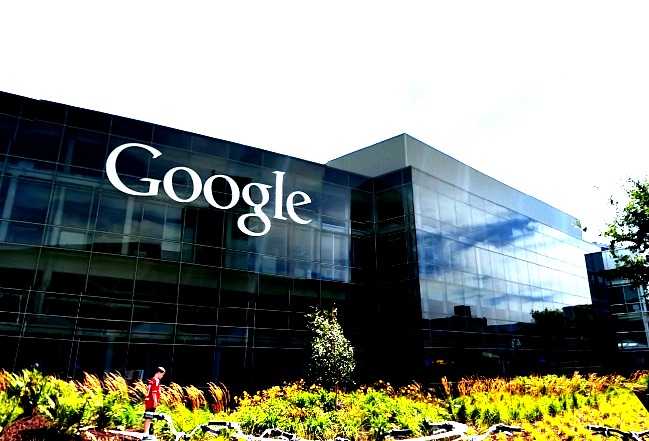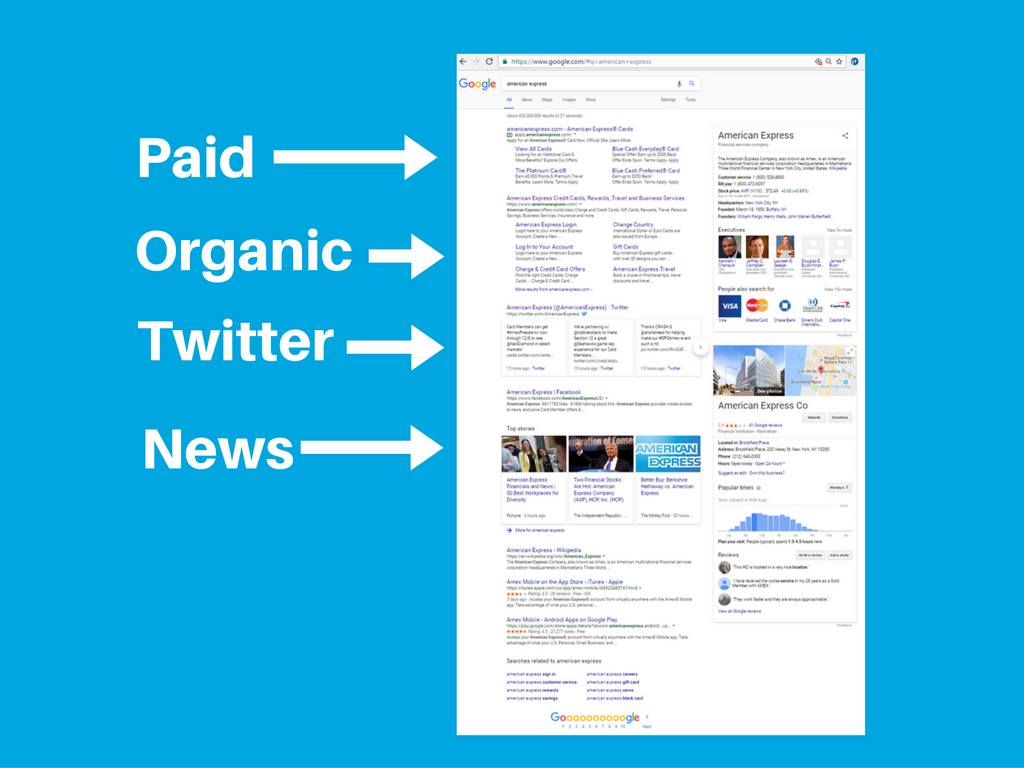
December 6, 2016: As first reported at SEOJournal.com, Google has tweaked its desktop SERP UI, re-ordering results in a way that emphasizes entries from Google News and Twitter. This will likely have a major impact on desktop-based user behavior, especially for branded searches.
For example, a branded search for “Sears” yields (in order of appearance on the page):
1. A slot for paid ads (which may or may not be occupied)
2. Organic with sitelinks, often with search box included.
3. A “top stories” box. Clicking on “more for (search term)” yields additional news stories.
4. Twitter feed. The three newest posts are displayed; a small rightward-facing arrow, if clicked, yields additional Twitter posts.
5. Map entries, organized in proximity to user’s known geolocation.
6. Additional organic entries.
7. Searches related to (term used).
Additionally, a right-rail sidebar area includes information sourced from the Knowledge Vault, plus links to official social profile areas on Facebook, LinkedIn, and Twitter. Also included is a “People also search for” slot, often populated by the brand’s competitors. In some cases, a “popular times” box will be displayed, plus reviews sourced by Google.

Items 1 to 7 do not always appear in the same order. For example, a search for “American Express” yielded:
1. A slot for paid ads (which may or may not be occupied).
2. Organic with site links.
3. Twitter feed.
4. Facebook URL.
5. Top stories.
6. Organic listings.
7. Searches related to (term used).
In American Express’ case, map entries appear on the right rail.
While the order of elements presented in this new layout isn’t consistent, it’s clear that Google is doing a couple of things here that will impact marketers:
1. Moving Twitter feeds above the fold. In many cases, Twitter entries are positioned well above the fold. Feed information is up-to-date, often only 15 minutes old.
2. Top stories (sourced from Google’s “News” tab) are also often above the fold. These entries are up to date, often only a few hours old.
What marketers must do to respond to this change
Google’s desktop SERP is evolving, and rapidly approaching a state in which information can be streamed in real-time. Twitter feeds are now more visible than ever on Google SERPs. The fact that they are now “above the fold” means they will attract more clicks. Even if they aren’t clicked, these entries function as “news tickers” displaying the latest information about a brand and its products.
This new situation represents a two-edged sword for marketers: on the one hand, it gives them the ability to transmit information directly to the Google SERP. This can provide enormous value to the marketer: new products, pricing, and other commercial information can now be put directly in front of the desktop searcher. Reputation management issues can be addressed directly on the Google SERP.
The “catch” is that the marketer must always ensure that his/her Twitter feed is up to date, otherwise it may appear to the searcher that one is being less than fully proactive. For example in Sear’s case, the last Twitter update is several days old; whereas American Express’ is only 15 minutes old. This time difference could make a difference were these two companies direct competitors in business verticals where responsivity is at a premium
News stories are similarly positioned very high in this new SERP layout. These stories appear very fresh, with many just a few hours old. This new functionality reinforces the importance of established media outlets, adding to traditional PR’s value proposition. At the same time, it also provides an added degree of risk for brands, given that news coverage often cannot be controlled at all.
All in all, this new layout raises the bar for brand marketers. The acceptance of this new layout by searchers will increasingly condition them to expect fresh, updated information to flow from brand marketers on a near real-time basis. While Google’s desktop SRP change provides excellent opportunities for marketers to impress searches by demonstrating their ability to keep current, it also burdens those unaccustomed to publishing data at such high rates of periodicity.
- 10 Mistakes to Avoid When Using QR Codes for Marketing - September 20, 2023
- Kevin Lee on How AI Changes the SEO Landscape - August 31, 2023
- The Power of Compound Marketing: Kevin Lee Presents @ 1MediaWorld 2023 Global Conference - March 7, 2023

